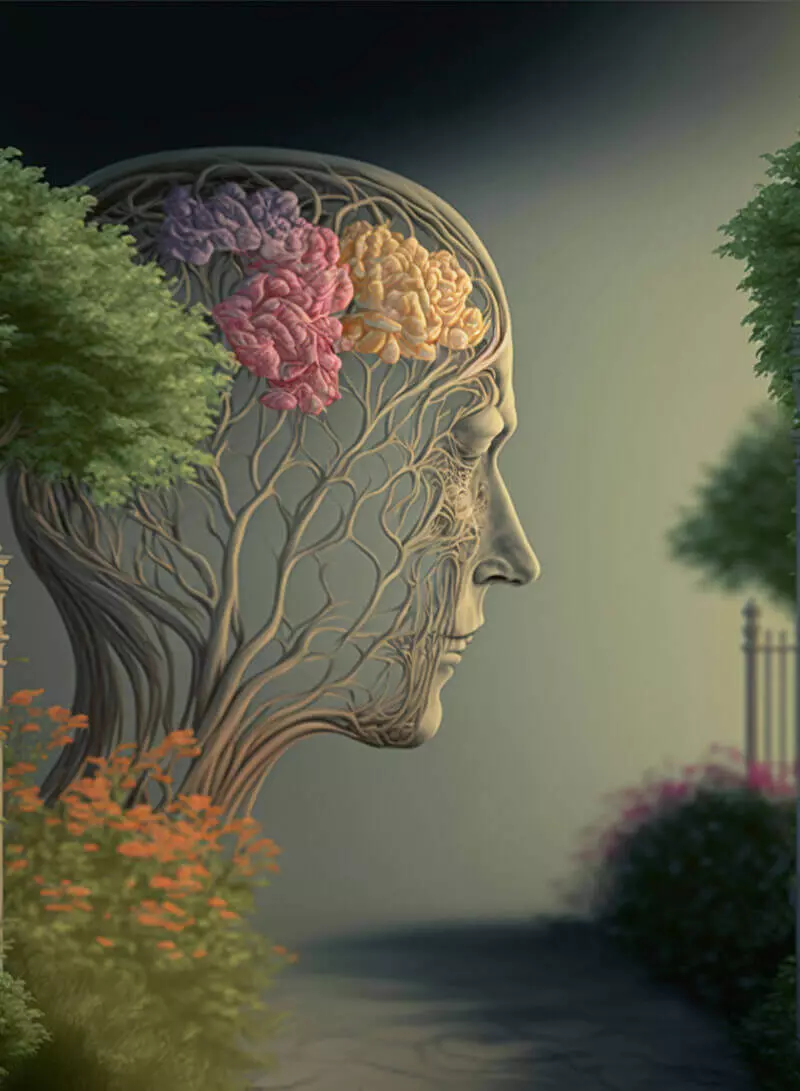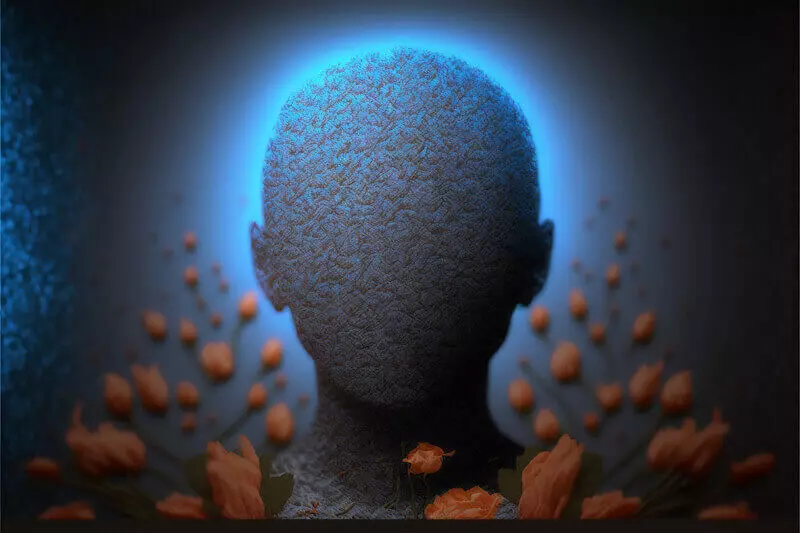
What is Aphantasia: Causes, Symptoms, and Treatment
Table of Contents
Aphantasia is the inability to visualize images voluntarily in one’s head, whether based on real experiences or not.
As with most medical conditions, there comes a Greek or Latin title ascribed to it. The word phantasia is Greek for imagination, or sometimes interpretation, and anyone who dabbles in this old language quickly learns a means not or without. Therefore, aphantasia is an absence of imagination.
For those with the disorder, it’s quite a harsh definition and not strictly true. Those with aphantasia are often gifted in other areas, and the brain seems to have no trouble compensating for this lack of mental imagery with numerical or verbal replacements.
If estimates are true, it could affect as many as 150,000,000 people. So how do you know if you have aphantasia? Finding out whether you’re affected by this condition is relatively simple, but finding the cause and implications is an entirely different story.
What is Aphantasia?
If you close your eyes, can you still see? The question may seem silly, but humans have the remarkable brain power to conjure up images of their past experiences, faces of loved ones, familiar objects, and general imaginings with their lids firmly shut.
Many take this skill for granted, assuming that creating mental pictures while reading a brilliant fantasy novel or clearly recalling a special childhood birthday cake’s shape and color is a fundamental human practice.
This kind of internal visualization is more to do with the mind than the eye, though it seems not all are equally competent with it. Aphantasia is the inability to visualize images voluntarily in one’s head. It’s estimated that approximately 2% of people have the condition.
A Brief History of Aphantasia
The idea of people having varying proficiency for mental images was formally theorized in the late 19th Century. It was renowned English scholar Francis Galton who began the discussion, yet the phrase Aphantasia was only coined in 2015, after a study by Dr. Adam Zeman. In actuality, Aphantasia is most likely a condition as old as sight itself.
As Darwin’s cousin, Galton sometimes lives in the shadows, but he was a highly respected individual in his own right, considered the father of eugenics. In Galton’s 1880 essay, Statistics of Mental Imagery, he talks about his initial experiment on the “mind’s eye.” Having selected 100 individuals, a large number of them, esteemed scientists, like himself, he posed this to them:
Before addressing yourself to any of the questions on the opposite page, think of some finite object – suppose it is your breakfast table as you sat down to it this morning – and consider carefully the picture that rises before your mind’s eye.
To his bewilderment, Galton found that “the great majority of the men of science… protested that mental imagery was unknown to them.” Thus sparked his deep, lifelong interest in the matter, a seemingly crucial component of the human experience.

The Symptoms of Aphantasia
Try to picture a monkey on a bicycle.
How about a red circle wearing a blue, triangular hat?
Can you see a coconut sitting on the beach?
If you struggle to paint the scene, even vaguely, you may have aphantasia. The symptoms are tied to our earlier definition, but there are often symptoms of aphantasia laid out in Dr. Zeman’s study mentioned above, Lives without Imagery: Congenital Aphantasia. Questioning 21 participants who had been affected by aphantasia since birth, he found:
- 12 had a “complete deficit in voluntary visual imagery”
- 10 had involuntary imagery while awake (in the form of ‘flashes’)
- 17 experienced imagery while dreaming
- Most reported “difficulties with autobiographical memory”
- The majority stated a “modest effect on mood”
- 14 identified “compensatory strengths in verbal, mathematical and logical domains”
In plain terms, people with the condition will most likely experience involuntary images when awake or dreaming, but typical aphantasia symptoms include struggling to recount memories as pictures, failure to recognize faces, and issues with trying to visualize future events.
If you’re wondering whether or not you have aphantasia, there are things you can do. Aside from referring to the symptoms, or the simple test of closing your eyes and imagining a scene or object, you can undergo specific tests to assess your mental picturing skills. You can take the Vividness of Visual Imagery Quiz, developed in 1973 by British psychologist David Marks.
Causes of Aphantasia
Image formation is a complicated process, which involves numerous areas of the brain. In his 1997 study using PET scans and 2004 study using fMRI scanning, Stephen M. Kosslyn found that our inner eye’s imaginings and things we physically see are processed in similar regions, a two-thirds crossover. However, there is no real consensus on how our mind’s eye works. Consequently, it’s quite challenging to understand what causes aphantasia.

Despite this, experts are firmly agreed that aphantasia comes in two forms: congenital, present from birth, and acquired, after brain injury or significant psychological event. The latter was most famously explored in Dr. Zeman’s case study of a retired building surveyor who had lost his ability to visualize after heart surgery.
A more recent example of acquired aphantasia features in a 2020 study, which followed a former architect who completely lost the ability to imagine after suffering a stroke, a “stark contrast to his (in his own opinion) above average ability for visual imagery… that he had relied upon in his work.” Whilst damage to various areas of both brain hemispheres has been shown to cause aphantasia, their results suggested that there may be a select few regions most responsible for visual imagery.
This year, however, Dr. Zeman offered new findings in Cerebral Cortex Communications, saying:
Our research indicates for the first time that a weaker connection between the parts of the brain responsible for the vision and frontal regions involved in decision-making and attention leads to aphantasia. However, this shouldn’t be viewed as a disadvantage – it’s a different way of experiencing the world.
Similar to how Zeman notes that trouble with mental imagery isn’t a major problem, Galton wrote that “[this] missing faculty seems to be replaced by other modes of conception [so they] can nevertheless give lifelike descriptions of what they have seen, and can otherwise express themselves.”
Put simply, when the brain cannot conceptualize in a visual way, it finds another way around. It’s so effective at this that many remain unaware that they have aphantasia well into adulthood, perfectly capable of seeing the world their own unique way!
The Cure for Aphantasia
There is no known cure for aphantasia, though the condition does not pose any significant risks. The inability to form images on demand is likely disappointing to some, but those with aphantasia use alternative skills to perceive and interpret the world.
Congenital aphantasia is thought to be less curable due to the limited plasticity of the brain after development, but there are currently no established theories on how to cure aphantasia, neither congenital nor acquired.
Treatments for Aphantasia
Treatment of aphantasia is relatively unexplored, so the viability and effectiveness of treating the mind’s eye is yet to be determined. Recently, a 2017 case study involved a 31-year-old patient with congenital aphantasia who attended a 1-hour vision therapy session each week for a total of 18 weeks, encouraged to perform home activities in between. Some of the session activities included:
- Block pattern activities
- Object visualization
- Grab-bag descriptions
- Recall exercises
- Various computer software (i.e. memoryOS)
While the patient’s test scores did not improve, they did report a slight improvement in creating mental imagery just before sleeping, though there was no significant difference throughout the day. Therefore, there is still no clear evidence of how best to treat aphantasia, or whether it can be treated at all.
There is anecdotal evidence that ‘image streaming’ may have positive benefits and could potentially serve as treatment for aphantasia. Image streaming is a technique whereby individuals verbalize their thoughts in order to inform their visualization – a kind of stream of consciousness that involves describing all senses to help build the image in your mind. Some who practice image streaming like to record their session to better assess their abilities and use them as a recall activity.
The Spectrum of Aphantasia
Aphantasia does seem to be a spectrum condition, much like many other psychological phenomena. The degree to which it affects people varies greatly, with some reporting a complete inability to imagine visually, while others experience greatly reduced abilities.
Additionally, there is a discrepancy between those with complete aphantasia that witness involuntary images while daydreaming or sleeping, with roughly two-thirds of those affected saying they do experience one or the other. Spectrum aphantasia means that, in moments of inspiration, some affected may still see short flashes of images, which suggests that they have the capabilities for mental imagery yet cannot consciously control them.
Yet, due to the nature of the problem, many people with aphantasia are self-diagnosed. When combined with the fact, there are no unanimously agreed-upon criteria, whether somebody is considered an aphantasiac remains highly subjective.

It is important to remember!
Most probably, aphantasia affects a large pool of people. Various surveys spanning since Galton’s early analysis indicate that “2-5% of people are very poor or non-visual imagers who, yet, maintain normal visual recognition abilities.” So, here are the essential things to remember:
- Aphantasia is the inability to visualize images voluntarily in one’s head, whether based on real experiences or not
- You can take the Vividness of Visual Imagery Quiz, or a comparable alternative, to evaluate your visualizing skills to determine whether you may have aphantasia
- Though Aphantasia is a reduced visualizing ability, those affected typically have compensatory strengths, like verbal, mathematical, or logical
- Mental Visualisation is connected to various departments of the brain, though their exact roles remain a mystery
- Aphantasia is not a measure of general cognitive function but simply another way of experiencing the world
Summary:
What is aphantasia?
Aphantasia is the complete inability or significantly reduced ability to visualize images in your head voluntarily.
How many people have aphantasia?
It is estimated that aphantasia affects around 2% of people or 150 million people, but some think the number could be as high as 5%.
What causes aphantasia?
Aphantasia can be either congenital, from birth, or acquired after brain injury. The precise cause of the condition remains unknown, as does the exact areas of the brain responsible for the ability.
Is there a cure for aphantasia?
There is no known cure for aphantasia, but there are potential treatments that some claim to be effective. Research on the condition is still in the early phases, so there remains the possibility of finding a cure.
The Takeaway
Aphantasia affects around 2% of people, but there is no reason to believe that having the condition dramatically worsens quality of life. Although it may be a little distressing to discover that you find it challenging to picture faces, past events, or objects, the majority of the time, these visualization skills are readily replaced by verbal, numerical, or logical counterparts.
As the father of Eugenics, a man fervently interested in the history of humanity, Francis Galton would surely admire the importance of having a few different lenses through which we observe the world. Aphantasiacs simply process things a little differently and, with variety being a fact of life, it’s a condition that we should appreciate and continue to study closely.